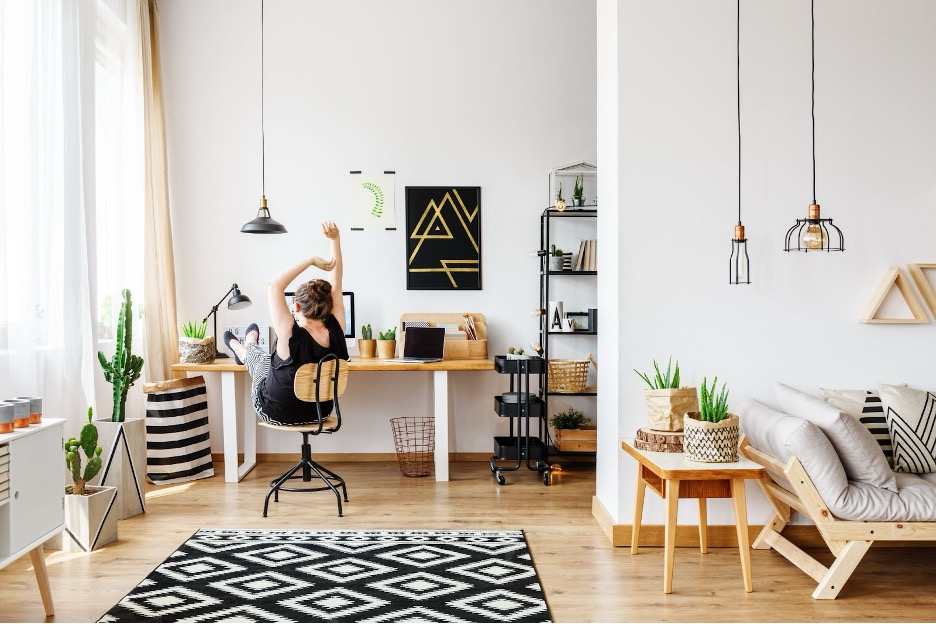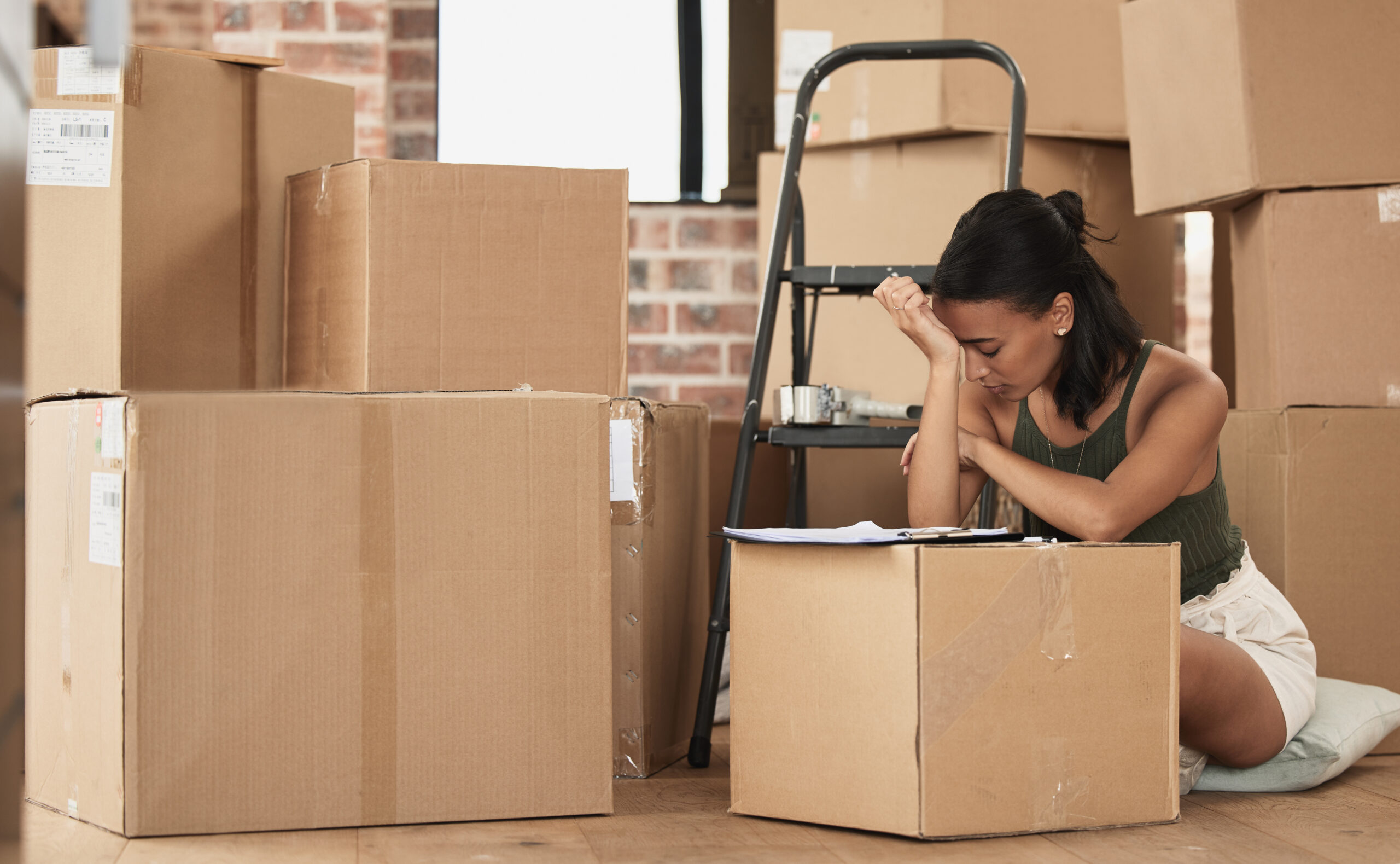- Moving Guides
- 6 Min Read
Our Expert Tips for Moving Into (and Organizing) Your First Apartment
-
Share

Moving into your first apartment is a major milestone. It’s exciting, liberating, and yes—a little overwhelming. Whether you’re leaving the family home, upgrading from a dorm room, or relocating to a new city, that first set of keys represents independence and possibility. But as anyone who’s been through it knows, apartment moving comes with unique challenges, especially when you’re working with limited square footage.
We’ve compiled essential tips to help make your first apartment move smooth and stress-free, as well as smart organization strategies to transform even the tiniest space into a functional, comfortable home.
Start with a Realistic Timeline
It may seem like overkill, but you’ll ideally want to begin planning your move at least 6-8 weeks before the date. Many first-time apartment renters underestimate how long the moving process takes, especially if you’re balancing it with work or school. Create a week-by-week checklist, working backward from your move-in date to ensure you don’t skip any steps.
Understand Your Building’s Rules
Apartment buildings differ from homes in that they often have specific moving regulations that can surprise first-timers. Depending on your apartment, you may have specialty instructions on timing, parking, or loading areas.
Before your move, check with building management about:
- Designated moving days/hours
- Elevator reservations
- Loading dock access
- Parking permits for moving trucks
- Insurance requirements
- Certificate of insurance from your moving company
Measure Everything—Twice!
One of the most common first-apartment mishaps is discovering that furniture won’t fit through doorways, stairwells, or elevators. To avoid this happening, make sure to measure:
- Doorway widths and heights
- Hallway widths and any tight corners
- Elevator dimensions (if applicable)
- The actual dimensions of your new rooms
Next, you’ll want to measure your furniture and compare the sizes. If you’re purchasing new furniture, make sure to do so before buying. Many first-time apartment dwellers discover too late that their dream sectional won’t make it up three flights of stairs.
Consider Professional Help
While DIY moving might seem like a budget-friendly option, apartment moves have unique complexities that professionals are equipped to handle. Professional movers are typically the safer and more efficient choice because they:
- Have experience navigating tight spaces and stairs
- Bring appropriate equipment for apartment moves
- Protect common areas from damage
- Save you time and potential injury
- Often have city-sized trucks designed for urban environments
Protect Your New Space
First impressions matter—both with your new home and with your new neighbors. Proper protection prevents damage that could affect your security deposit.
Professional movers typically provide this service. At BMS Moving & Storage, we take care of all flooring, elevators, and indoor stair railings, as well as wrapping all of your not-boxed items in specialty quilted moving blankets.
Plan Your Loading Strategy
When moving into an apartment, the order you load your moving truck becomes crucial because it determines the unloading sequence.
You’ll always want to load in reverse order of priority:
- Items going into storage
- Seasonal items
- Decorative items
- Books and non-essential items
- Bedroom furniture
- Living room furniture
- Kitchen essentials
- Bathroom necessities
- First night box (see below)
Keep in mind: If you’re working with BMS Moving & Storage, you won’t have to worry about remembering this step! We’ll do all the work for you.
Pack a First Night Box
Your first night in your new apartment should be celebratory, not stressful! In order to make this happen, pack a separate box or suitcase with as many of the following as you’ll need to be comfortable:
- Toilet paper
- Shower curtain
- Towels
- Bedding
- Basic toiletries
- Phone charger
- Pajamas
- Change of clothes
- Essential medications
- Basic cleaning supplies
- Snacks and water
- A celebratory beverage!
Small-Space Organization Strategies
Now that you’ve successfully moved in, the real challenge begins: organizing your belongings in your limited space. Here are expert strategies to maximize every square inch.
The 90-Day Rule
First apartments are notorious for quickly becoming overcrowded. Implement the 90-day rule: if you haven’t used an item in three months (excluding seasonal items), it’s time to reconsider its place in your home.
Create three categories:
- Keep and display
- Keep and store
- Donate/sell
Be ruthless—small spaces require intentional curation.
Think Vertically
When floor space is limited, look up. Vertical storage solutions dramatically increase your usable space:
- Floor-to-ceiling bookcases
- Over-door organizers
- Wall-mounted shelving
- Hanging pot racks
- Pegboards for accessories
- High hooks for bicycles or sports equipment
Installing floating shelves above doorways, windows, and in other traditionally unused spaces can create storage that doesn’t encroach on your living area.
Embrace Multifunctional Furniture
In small apartments, every piece should earn its keep, ideally serving multiple purposes:
- Storage ottomans (seating + storage)
- Murphy beds (bed + floor space when not in use)
- Nesting tables (expandable when needed)
- Extendable dining tables
- Sofa beds for guests
- Coffee tables with storage compartments
- Desks that convert to dining tables
Zone Your Space
Even studio apartments can feel organized when properly zoned. Create distinct areas for different activities using:
- Area rugs to define spaces
- Bookshelves as room dividers
- Curtains for flexible divisions
- Different lighting schemes
- Varied color palettes
Each zone should have its own storage solutions tailored to its function.
Kitchen Organization for Minimal Spaces
Kitchens in first apartments are typically compact, but with strategic organization, they can be fully functional:
- Magnetic strips for knives and metal tools
- Tension rods under sinks for hanging cleaning supplies
- Stackable containers for food storage
- Door-mounted spice racks
- Pot lids organized in file organizers
- Utensil dividers in drawers
- Over-cabinet hanging baskets
If counter space is minimal, invest in a rolling cart that can serve as additional prep space, kitchen storage, or even a makeshift bar for entertaining.
Closet Maximization Techniques
First apartment closets rarely match your storage needs. Multiply your space with:
- Double hanging rods
- Over-door shoe organizers
- Vacuum-sealed bags for off-season clothes
- Shelf dividers for folded items
- Hooks on the inside of the door
- Under-shelf baskets
Consider a seasonal rotation system, where off-season clothes are stored in under-bed containers, freeing up closet space for current needs.
Digital Organization Solutions
Don’t forget that digital solutions can help minimize physical clutter:
- Scan important documents rather than storing paper
- Use digital subscriptions instead of physical magazines/books
- Consolidate entertainment to streaming services rather than DVDs/CDs
- Take photos of sentimental items you don’t need to keep physically
When to Consider Storage Solutions
If you’ve implemented these strategies and still feel cramped, it might be time to consider off-site storage. BMS Moving and Storage offers storage solutions that can complement your apartment living.
We can take care of packing as little or as much of your space as you would like,” they note, emphasizing that they can “take care of all disassembly and reassembly of all your furniture and bulky items.”
External storage works particularly well for:
- Seasonal items (holiday decorations, winter sports equipment)
- Sentimental items you can’t part with but don’t need regular access to
- Documents that must be kept but are rarely needed
- Collections that have outgrown your space
The Emotional Aspect of Small Space Living
Finally, remember that your first apartment represents independence and personal growth. While the space may be small, it’s yours to shape into a home. Focus on:
- Quality over quantity in your possessions
- Experiences over accumulating things
- Creating a space that supports your daily life
- Making memories, not just storing stuff
With these organization strategies, you’ll be settled into a well-organized, functional first apartment that feels like home, no matter its size. Your first apartment might be small, but with these expert tips, it can feel spacious, organized, and perfectly suited to this exciting new chapter of your life.



